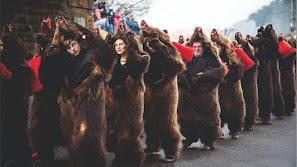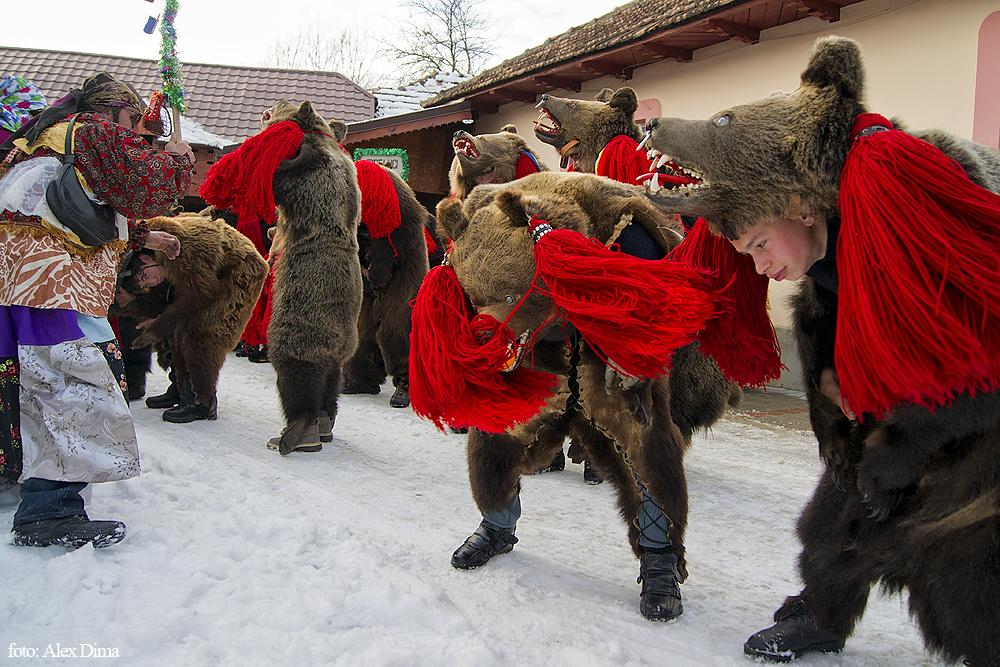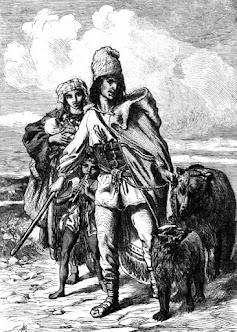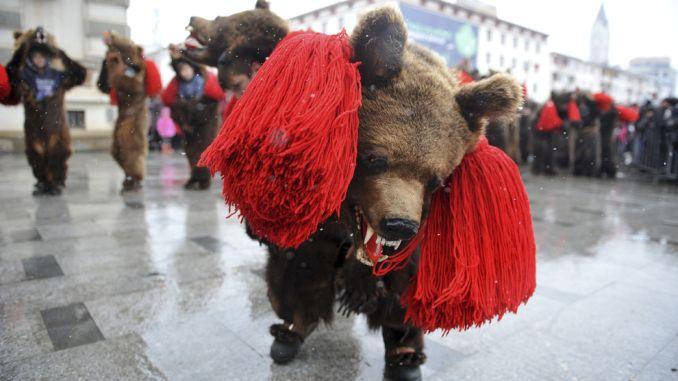The game of the bears is an archaic custom that is practiced on New Year’s Eve, especially in Moldova, and consists in the interpretation of a ritual by a group of bears. The bear-riding band is made up of bear-riders disguised as bears, whistlers and drummers, each playing a specific role. Sometimes, in the pack, they may be accompanied by donkeys or masked men.
Origin:
The bear game most likely comes from the Middle Ages. By the mid-20th century, gypsy bears were roaming the villages with bears that would run over those suffering from ‘lower back’. In the drumming, several bears, kept in chains by the bears, had to play according to a certain rhythm.
There is a theory that this holiday is of pagan origin, taken over from the Geto-Dacians. In addition to the bear game, the deer and goat games and the tradition of New Year’s masquerade, especially with devil masks, are of the same origin. The bear dance represents the ritual of death and resurrection.
In Moldavia:
The bear mask-costume consists of a full bear fur, trimmed with straps, studs and canes. In the villages of the Trotuș valley hilly area, the bear mask is made of calf and sheep skins.
This custom is also called “the bear’s fight”, “the meeting of the belts” or “the belt of the belts”, differing from village to village in the Trotuș Valley. The nationally appreciated game differs in form and theme from place to place.
For those in the mountain area of the Trotuș valley, the game of the bear symbolizes unbridled freedom and for those in the south-eastern part of the basin, the bear in chains performing various acrobatics imitates and suggests the opposite, i.e. the total lack of freedom.
The first form of manifestation is considered the oldest and most valuable, being specific to the villages of the Dărmănești Depression and preserves its authenticity in Dărmănești and Dofteana.
The game of the bears in the villages of Dărmănești, Asău, Dofteana and the surrounding villages of the Trotuș Valley has evolved from a simple custom to large-scale shows. Over time, in Dărmănești the show began to attract spectators from other counties of the country.
During a television broadcast in the 1970s, Iulian Antonescu said, “I saw in this show elements of art covering a space that begins with the Neolithic and ends with the present. It is the most authentic and interesting folkloric manifestation one can see.”



Sources:
Text and pictures – Wikipedia Link
Video – Youtube Link

